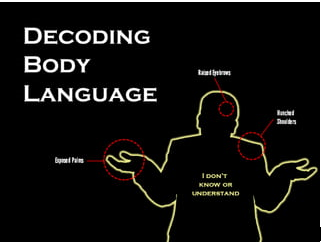When girls play with their hair, it might mean more than you think. The way they twirl, brush, or tuck their hair can show what’s on their mind and in their heart.
It could reveal hidden messages or desires they’re not saying out loud. Understanding this body language could give you valuable insights into what they’re really feeling.
So, what’s the deal when a girl starts messing with her hair? Let’s dig in to uncover the secrets behind this seemingly innocent behavior.
Common Reasons for Hair Twirling
When girls twirl their hair, it’s often a reflexive action tied to their feelings or thoughts. This seemingly harmless habit can actually convey a lot about how they’re feeling and what’s on their mind. Hair twirling isn’t just about grooming; it can be a silent way to show nervousness, flirtation, or even boredom.
If someone is constantly twirling their hair, it might mean they’re seeking comfort or reassurance, like a self-soothing mechanism. In social settings, it can be a subtle way to communicate interest or attraction. Watching someone play with their hair can give you clues about their emotions. It could signal anxiety, excitement, or deep thought.
Understanding these subtle cues can help you interpret unspoken messages and navigate social situations better. So, the next time you notice yourself or someone else twirling their hair, pay attention to the context and the social cues to uncover the hidden meanings behind this common yet revealing gesture.
Cultural Perspectives on Hair Playing
In different parts of the world, playing with your hair can mean different things. Each culture has its own beliefs and interpretations about hair gestures, which can give insight into a person’s intentions or emotions.
For instance, in some places, hair symbolizes femininity, so twirling or touching it might signal flirting or shyness. On the flip side, in other cultures, showing or messing with your hair in public could be seen as disrespectful or against the norms.
In certain Asian societies, twirling or tugging on your hair could be seen as a way to show modesty or bashfulness. But in Western cultures, these actions might be interpreted as signs of nervousness or flirtatious behavior.
It’s important to be aware of these cultural differences when trying to understand body language, as what may seem normal in one place could mean something entirely different somewhere else. Hair gestures offer a glimpse into the diverse cultural backgrounds that shape how we perceive nonverbal communication.
Psychological Interpretations of Hair Gestures
Let’s dive into the hidden meanings behind hair gestures and what they can tell us about a person’s thoughts and feelings. When someone fiddles with their hair, they might be subconsciously revealing more than they realize.
Here are four insights into the psychological significance of hair gestures:
- Emotional Triggers: Playing with hair could be a way for someone to comfort themselves when feeling anxious or stressed. It might show a need for reassurance or support.
- Subconscious Signals: Twirling or touching hair can be a subtle way of seeking attention or showing attraction. It could also indicate a longing for closeness and connection.
- Nonverbal Cues: Paying attention to how someone interacts with their hair can offer clues about their emotions. It may hint at insecurity, flirtation, or even boredom, helping us understand their emotional state.
- Body Language: Watching how someone handles their hair can reveal hidden emotions and desires. These gestures serve as a form of nonverbal communication that provides valuable insights into their inner world.
The Connection Between Hair Twirling and Flirtation
Twirling hair while chatting can be a sign of flirting, showing interest and attraction. When a girl twirls her hair during a conversation with you, it’s one of the ways she might be subtly flirting.
This nonverbal way of communicating feelings through body language is a strong way to show interest without saying anything. Hair twirling is a common behavior that can be seen as a social cue for romantic interest, as it draws attention to one’s looks and can make one appear more attractive.
Flirting often involves small gestures and actions, and hair twirling is one of those behaviors that can show playfulness and a bit of shyness. It can also be a way for someone to boost their confidence and seem more appealing.
Understanding these social cues and body language can help you figure out the underlying intentions behind these actions, giving you insight into how people interact. So, if you see someone playing with their hair while talking to you, it could be their way of hinting at some flirtatious interest.
Impact of Hair Playing on Self-Soothing
In times of stress or uncertainty, many people find comfort in twirling their hair. This simple, often unnoticed action can have a big impact on how we feel. When someone twirls their hair, it might be a sign that they’re trying to calm themselves down and feel better.
Here are four important things to know about how playing with hair can help us feel better:
- Stress Relief: Twirling hair is a common way to reduce stress and anxiety, helping us feel more at ease when things get tough.
- Body Language: Playing with our hair can show others that we’re feeling unsettled or looking for support, even if we don’t say anything out loud.
- Nervous Habit: Hair twirling is often a habit we do without thinking when we’re nervous, giving us a way to release built-up emotions.
- Communication Signal: Sometimes, twirling hair can be a subtle way of telling others that we need help or understanding, even if we don’t say it directly.
Hair Twirling as a Form of Communication
When someone twirls their hair during a conversation, it’s like they’re speaking without words. It’s a subtle way of showing how they feel inside. Hair twirling can reveal nervousness, shyness, or even attraction. The meaning behind this nonverbal cue changes depending on the situation and the person’s personality.
Some people twirl their hair to calm themselves down, while others do it to get noticed or show interest. For some, it’s an automatic gesture that reflects vulnerability or a need for reassurance. In different scenarios, hair twirling might be a sign of playfulness or teasing. Understanding these small gestures can give you a peek into someone’s emotions and intentions during social interactions.
Gender Differences in Hair Manipulation

When people interact, we can see clear differences in how they handle their hair based on gender. Societal norms heavily influence grooming choices, especially when it comes to hair styling and confidence. Here are four key observations that highlight these differences:
- Hair Styles: Men usually go for shorter, easy-to-maintain hairstyles, while women often experiment with different lengths, colors, and styles to express themselves and meet beauty standards.
- Touching Hair: Women tend to touch or play with their hair more frequently than men. This gesture can be subconscious and linked to flirting or nervousness.
- Hair Care Routines: Women typically spend more time and money on hair care, like styling, treatments, and salon visits. This reflects societal expectations around femininity and beauty standards.
- Social Judgments: The way people manipulate their hair can be viewed differently based on gender. Women may face harsher judgment for their grooming habits compared to men, who might face less scrutiny on this front.
Understanding these gender differences in hair manipulation can give us valuable insights into how individuals express themselves and navigate social interactions.
How to Respond to Hair Twirling Signals
Responding to hair twirling signals is all about paying attention to nonverbal cues and understanding the context. When someone twirls their hair, they’re communicating something without words. To respond appropriately, look at their overall body language. Are they looking at you, smiling, or leaning in? These hints can help you figure out what the hair twirling means.
Sometimes, hair twirling can show nervousness or anxiety. If you see this, respond with empathy and reassurance to help them feel at ease.
On the other hand, if the hair twirling seems flirty or playful, you can respond with a smile or some light-hearted banter.
Conclusion
When you notice someone twirling their hair, pay attention because each flick and twist tells a story.
By paying attention to these nonverbal cues, you can gain a better understanding of the emotions and intentions behind them.
So, next time you see someone playing with their hair, keep an eye out – you might discover a whole new way of connecting through communication.
Keep an eye for more news & updates on Gossips.Blog!




